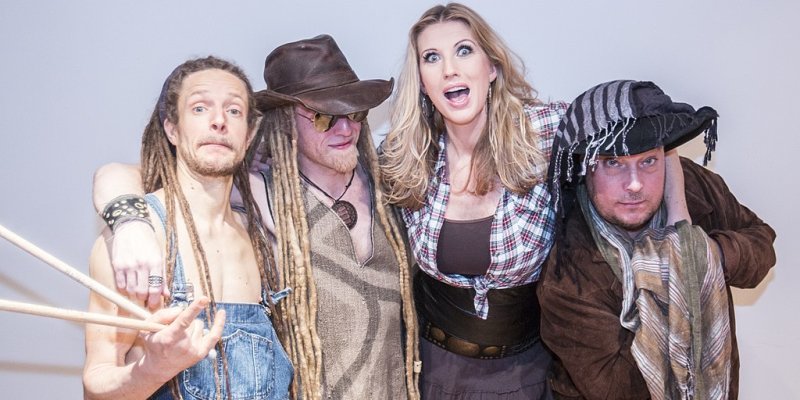
"Cotton-Eyed Joe" is a traditional American folk song that has been widely popularized and adapted over the years, but where did it come from?
Its origins are somewhat murky, and it's difficult to pinpoint a specific date or author for the original version of the song, but it pre-dates the 1861–1865 American Civil War.
While the origins are unclear, studies point to it being a folk song that was made and sung in the African-American slave community.
It's likely that "Cotton-Eyed Joe" emerged from the collective creativity of African American slaves, potentially as a work song, dance tune, or form of entertainment during their limited free time.
As with many folk songs of this nature, "Cotton-Eyed Joe" would have evolved through oral tradition, with various singers and communities adding their own interpretations and variations over time.
The story in the lyrics of "Cotton-Eyed Joe" typically revolves around a character named Cotton-Eyed Joe and his negative impact on people's lives.
But because "Cotton-Eyed Joe" is a folk song that has been passed down through generations and adapted by various individuals and groups, there isn't a single definitive set of lyrics.
While the original lyrics from the folk song likely differ a bit from the popular versions like the one below used in the remake from Rednex, the overall story is the same.
If it hadn't been for Cotton-Eye JoeI'd been married long time agoWhere did you come from, where did you go?Where did you come from, Cotton-Eye Joe?
Cotton-Eyed Joe is often involved in a romantic relationship with a woman, and the narrator is a guy who's had his gal stolen.
However, Cotton-Eyed Joe's nature seems to be restless, and he eventually leaves or disappears, leaving the woman behind.
He brought disaster wherever he wentThe hearts of the girls was to Hell, broken, sentThey all ran away so nobody would knowAnd left only men 'cause of Cotton-Eye Joe
The women he dealt with were all left with a sense of loss and longing after Cotton-Eyed Joe just up and left them behind.
Related Post: Is The Song Black Betty Racist?
It's likely that the term "cotton-eyed" in the context of the song is not meant to be taken literally.
It's a figurative expression that doesn't have a clear, universally agreed-upon meaning, but it often carries a sense of someone being pensive, sad, or having a distant, dreamy look in their eyes.
But there are tons of different interpretations. A common idea is that the term "cotton-eyed" could be associated with alcohol intoxication and could fit with the song's themes of dancing, revelry, and relationships.
In some interpretations of the term "cotton-eyed," it has been suggested that it might refer to a condition known as "cotton-eyed" in the context of illnesses or ailments.
A huge interpretation as of late even goes as far as saying that he had an STI, and that's what made his eyes so white.
One of the symptoms of late-stage syphilis is a condition called "interstitial keratitis," which can cause inflammation and cloudiness of the cornea, giving the eyes a somewhat opaque appearance.
Others argue that the term "cotton-eyed" in the context of the song "Cotton-Eyed Joe" refers to the bright color of a black man's eyes or the eyes of someone who works in the mines and is covered in dirt.
In some versions of the song, there are references to Cotton-Eyed Joe being cross-eyed. The term might suggest that Cotton-Eyed Joe stands out from others due to his distinctive appearance or behavior.
The song has been recorded and performed by numerous artists over the years, with different variations of the lyrics and musical arrangements.
It has become a staple at square dances, barn dances, and other traditional American social gatherings. The fiddle is often a prominent instrument in performances of the song.
One of the earliest recorded versions of "Cotton-Eyed Joe" was by Al Hopkins and His Buckle Busters in 1927. This version showcases the song's traditional folk and string band roots.
In 1967, Nina Simone, known for her soulful and jazzy interpretations, recorded a rendition of "Cotton-Eyed Joe" that adds her unique vocal and piano stylings to the song.
One of the most well-known versions of "Cotton-Eyed Joe" was recorded by the Swedish Eurodance group Rednex in 1994. This version blended the traditional folk elements of the song with a modern dance beat and gained significant popularity worldwide.
The Chieftains, an Irish folk band, collaborated with country musician Ricky Skaggs to create a cross-genre rendition of "Cotton-Eyed Joe" that combines traditional Irish and American musical elements in 1992.
Related Post: The Deep Meaning Behind Swing Low, Sweet Chariot

As a session singer, writer, and producer that has worked with over 300 clients to provide high-quality jingles, singles, and features, Yona spends her time creating and marketing new music and helpful resources for creators. Check out Yona’s latest releases on her Spotify, her Youtube and share if you like it!
If you are in need of singer, songwriter or song producer services, see what Yona Marie can offer you on her services page.